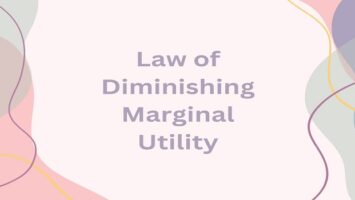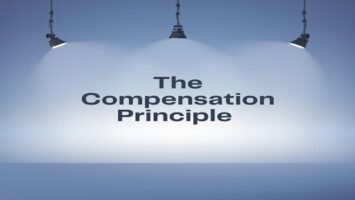Table of Contents
Theories of Tax Shifting:
The theory of tax shifting owes much of its development to those pioneers, Adam Smith and David Ricardo, who treated taxation in relation to the problems of value and distribution. Smith disapproved of the contention of the physiocrats that all taxes concentrate on land rents by showing that some taxes could be shifted. Ricardo revised Smith’s theories, elaborated upon them, and set forth a body of rules concerning tax shifting, which were largely accepted by classical economists.
The Concentration Theory:
Numerous writers, especially Physiocrats, have advanced the theory that all taxes ultimately concentrate on a particular object. The Physiocrats were convinced that all taxes, however, they were imposed, concentrate on the net income of land. They reasoned that land was the only source of income for wages tended to remain at a subsistence level and could not be taxed and interest was like-wise a necessary payment for the use of capital, on which the taxes could not rest. This left land rents as the sole taxable surplus. The land-owner paid all taxes in the end because all taxes gravitate towards the net product of the land.
The Physiocrats, therefore, argued that the taxing diversity of taxes should be abolished and that a single tax on the net income of land should be imposed. This would simplify taxation, reduce the excessive cost of tax collection, and reduces the tax charges upon the landowners. The famous single tax controversy has continued since that day, although they were not the first proponents of a single tax on land values.
However, Physiocrat’s contention that agriculture alone is productive has been condemned by Adam Smith and modern economists too. Modern economists are of the view that all economic activities are productive, and a single tax on land is not suitable in modern welfare societies. The burden of taxation should be distributed in an equitable manner in the community as a whole and not on a particular section of the community.
However, we must not deny the merit of the theory that it laid great stress on the fact that all taxes are ultimately paid out of the surplus. And when there is no surplus, attempts are made to shift the burden of taxation. Moreover, it would not be justified to impose a tax on a person who does not enjoy any surplus in an economic sense. Hobson also pointed out that all taxes should be imposed directly upon the taxable economic surplus to avoid the waste and damage resulting to production and consumption from the struggle to shift taxes to higher prices.
The Diffusion Theory:
Contrary to the concentration theory that all taxes concentrate upon land income or other objects, the diffusion theory asserted that all taxes are diffused among the members of a community. This theory was advanced by some French writers like Mansfield and Canard. They were convinced that all taxes were equitably diffused all over society. In other words, the individuals from whom the tax is collected do not ultimately bear the whole burden but shift it onto the other classes, so that it is diffused all over society.
However, for some time, a tax may sick at a place where it is imposed, but it is shifted again and again till its burden is spread over the entire society. To put it in the words of Mansfield, “A tax is like a stone falling into a lake and making a circle, till one circle produces and gives motion to another, and the whole circumference is agitated from the centre.”
Canard compared the imposition of a tax with extracting some blood from one of the veins of the human being; although it is taken from a single vein, the loss is spread over the whole body and the body remains in equilibrium. Canard believed that labor and capital, as well as land, produce a taxable surplus, and through buying and selling, or business transactions, all taxes are diffused among the members of the society, and rest upon the surplus incomes. He stated that it requires some time for this diffusion to be completed, hence old taxes were preferable to new ones, for new taxes upset the existing harmonious distribution of tax burden.
It might be argued, of course, that such diffusion theory results in the conclusion that taxes concentrate upon surplus incomes, but Canard apparently thought that surplus incomes were so universally held that taxes would be widely diffused among the members of the society.
However, this comfortable view become quite popular in certain circles, but all classes realize today that some taxes are more burdensome than others. Moreover, some have reached the conclusion that all taxes are unequally diffused, no matter how they are imposed. The poorer classes, for example, might be paying all these taxes, because they are less able to shift them than the richer classes.
Walker points out that theory is based upon the assumption of perfect competition but perfect competition cannot exist where there is ignorance, inertia, poverty, and fear in the community. The wealth of society from which taxes are paid cannot be compared with a fluid or to cupping, but should be compared to a tree or the body, no part of which can be cut without being disfigured.
The diffusion theory, however, although it is contrary to the world of actual fact, and although it attempts to prove more than it can, has been of considerable advantage, because it emphasizes the fact that taxes do not rest, where they’re assessed. That is its one main redeeming feature, otherwise, the theory is useless, as it does not explain the fact, where and in what proportion the actual incidence of a tax reaches. Hence, it does not explain how the incidence of tax is to be determined.
The theory is, however, shallow and misleading, as it avoids the question of justice in taxation. It assumes that no tax is just or unjust, as all taxes are diffused all over the society, and nobody can either bear the entire burden of tax or can escape from its burden totally. The taxpayer is only a medium to realize the tax which is ultimately borne by everybody. Hence, according to this theory, the problem of just distribution or equity does not arise. This is obviously a wrong contention. Taxes indeed are often widely diffused, but this theory ignores the fact that this diffusion does not take place automatically, and the government has to take certain measures for bringing about the just and equitable distribution of the burden of taxes.
The Modern Theory:
The modern theory is based upon the marginal analysis of value and price as defined by the new Classical economists, particularly by Alfred Marshall in the 19th century. The application of this theory to tax shifting is the work of many writers, to whom E. R. A. Seligman and F. Y. Edgeworth may especially be mentioned. This is the prevalent theory of shifting at the present time. There are many versions of this theory. The difference, however, consists principally only in the emphasis laid on particular points, manner of presentation, and minor matters of logic. However, it can be said that the analysis of value and price has been applied to the problem of tax shifting and the determination of the incidence of taxes in modern theory.
The modern theory possesses all the virtues which the earlier theories had. It accepts and advocates the fact that all taxes should be imposed directly upon the taxable economic surplus, if the tax-payer (either the consumer or the producer) enjoys an economic surplus, he may readily bear the burden of the tax, otherwise he will try to shift it. Further, the modern theory regards tax forms a part of the cost of production and it, therefore, enters into the price. Hence, shifting of a tax takes place through a change in price. A person may try to pass on the tax to another only by raising the prices of the taxed commodities. Therefore, shifting is common in commodity taxation. If taxes have no effect on prices, they are usually not shifted. Hence, shifting (forward or backward) is not possible where there are no price transactions.
Hobson argues that all taxes should be imposed directly upon the taxable economic surplus to avoid the waste and damage resulting in production and consumption from the struggle to shift taxes to higher prices.
A few will agree with Stein that taxation is always a part of the cost of production, and, therefore, it enters into prices with the result that it is diffused throughout the community.
Obviously, shifting and incidence of taxes depend upon the process of pricing. But the prices are determined by the forces of demand and supply. Hence, tax shifting or tax incidence depends upon the behavior of consumers and sellers. Therefore, to understand the nature of tax shifting as well as to determine the incidence of a tax, the factors which affect the behavior of consumers and sellers, i.e., the factors, which affect the conditions of demand and supply, should be analyzed.
However, the most important factors, which affect the conditions of demand and supply, are the elasticity of demand and elasticity of supply and the laws of returns. Besides, it should also be noted that the final shifting of taxes is conditioned by the relative strength of the various tendencies at work facilitating and preventing shifting.









Comments (No)